In early February my girlfriend and I spent five days in Morocco, a country I had not visited before but definitely hope to again. Having flown into Marrakech we were met and driven to the old town before being taken to our riad (guest house) by a porter with a barrow. The streets here are too narrow for cars. The hustle and bustle was evident even at 8pm and we were swept along through the fast paced environment in an attempt to keep up with him before being deposited with our bags at our lodgings. The old city in Marrakech has been a focal trading point in the country for centuries and its ancient architecture and land use have been preserved. The rest of the city has grown up surrounding this citadel and is dramatically different. Inside the walls of the old town are a maze of narrow streets with stalls and restaurants packed into every available position leading to a central square. These streets are largely pedestrian with traders moving goods by donkey and cart and locals zipping along on mopeds and bicycles. The square is open and full of the sounds of the markets and the call to prayer. Adjacent to it is the central mosque. Outside of the walls are spacious boulevards with designer shops and modern apartments. Cars and taxis clog the roads and there is no public transport.
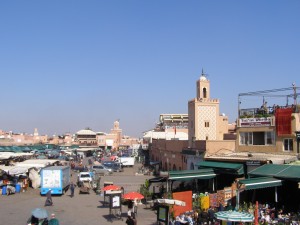
After a huge meal and a night’s sleep we set out to explore the old town. Wondering through the souks we made our way to the main square admiring the stalls of spices, baked goods, pottery and silver; all items that would have been traded here in the past but now geared largely to the tourists. The stall holders have adapted to selling to foreign visitors. Increased quantity, reduced quality and inflated prices! Other attractions include snake charmers; posing for photographs with water carriers in traditional dress and horse drawn carriage rides. All elements of the past made accessible to tourists.
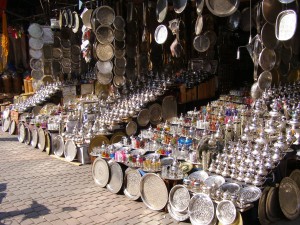
We spent time wondering around the gardens of the central Mosque observing the oranges being harvested and watching cranes flying to and from their nests on top of telephone masts.
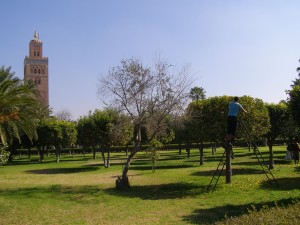
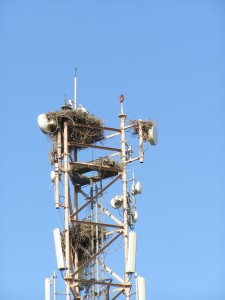
The modern version had been disguised as a palm tree and so wasn’t attracting the birds, a case of a good intention to disguise modern intrusion not benefiting wildlife perhaps.
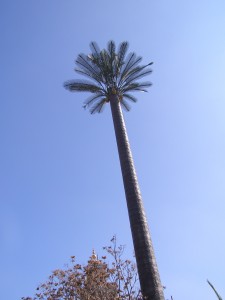
I was impressed by the productive nature of such a central space and its simplicity mirrored that of an orchard. After a long day exploring, haggling and watching the spectacle of life in the old town we returned to the peaceful and beautiful riad. These former wealthy merchants town houses have been converted into tourist accommodation with a light touch, their layout and ornate décor remain largely the same. For this reason they provide the perfect contrast to the bustling town with thick walls and shady interiors keeping out the sounds and the sun.
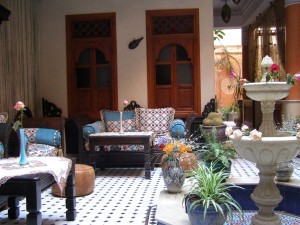
We then journeyed south from Marrakech into the Atlas Mountains. On the edge of the city I couldn’t help noticing the large new developments popping up with regularity which much like the equivalent in our own country lacked the variety of the more central areas of the city. They were focused around golf courses with irrigated and manicured fairways. Perhaps like the old town they might be better off being centred around a market, religious focal point or productive gardens. Passing through fruit and olive plantations we climbed into the mountains and after a lengthy stretch up a dirt track reached the village and lodge where we were staying. Ouirgane is a village of 50 or so homes on the side of a the Azendine Valley just outside of the Toubkal National Park named after the highest peak in the area and in fact North Africa at over 4 thousand metres. The peaks were dusted in snow and the land covered in low scrub created a carpeted effect from a distance. The valley floor like many in the area contains orchards and small fields supported by the melt water streams running through them. The settlements in the area are those of the Berber people who have occupied it since as early as 3000BC. Their lifestyle is largely subsistence with some produce being taken to towns to trade as well as the travelling market which moves up to 70km a day between the settlements. We relaxed in a Berber style tent and enjoyed watching the sun go down over the valley.
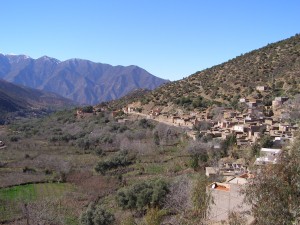
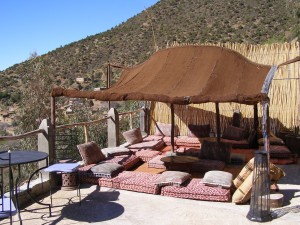
The following day was dominated by a walk into the National Park along the same valley in which our accommodation was situated. After passing through the National Park boundary which was indicated by a somewhat faded sign the wide track soon became a narrow path and the terrain was rugged.
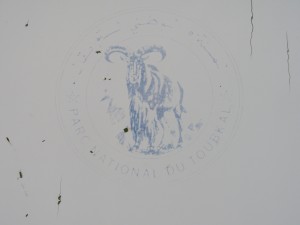
A three hour walk brought us to a tiny settlement in the upper reaches of the valley consisting of just a few houses, animal pens and fruit fields. The children greeted us with the odd word of French and seemed shy but somewhat accustomed to walkers asking for sweets and money. The village did have a power connection but very little else. We enjoyed the spectacular scenery then headed for home.
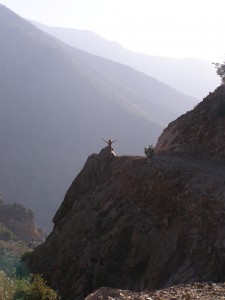
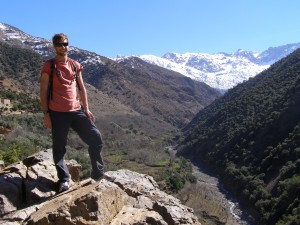
Unlike the old town of Marrakech the Berber settlements are yet to adapt to the increase in tourism in the area although its mark is noticeable. New holiday resorts and private holiday homes were springing up closer to the main road than Ouirgane. We were told by the manager of our lodge they were owned by wealthy Moroccans from the city and foreign holiday companies, the lodge in which we stayed had British owners. The local people are seeing very little of the increase in income in the area while there is a threat of their lifestyle being driven away if they do not have a say in the development. The local walking guides and lodge manager were passionate about the traditional lifestyle and the environment in which they lived. They wanted to start their own business running treks through the mountains but were apprehensive at breaking away from their current employment. I feel that by supporting the local people the increase in tourism can be managed much more effectively and protect the local communities and environment.
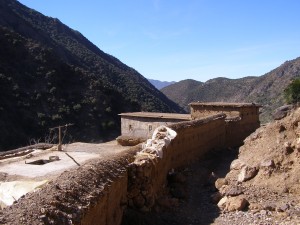
The temptation for governing forces is probably to allow foreign and wealthy investment and take a slice of the profit. However the sustainable solution would be to support local people in taking control of the tourism in the area. Perhaps incentive schemes for new sustainable businesses as well as guidance in running them could generate a network of schemes that will allow the area to adapt to the demands being placed upon it. Everything is set up for this to happen: fantastic scenery and an attractive climate; outdoor activities and wonderful food; perhaps most importantly local pride and enthusiasm. However without support I do not believe it will happen before significant imposition from outside wealth gets there first. That would risk the balance of this spectacular environment and indigenous population. There is a huge opportunity here to support and enhance existing communities, develop local businesses, educational resources and protect the environment but a considered and light touch approach is required. I hope as the area develops the politicians and investors show some sensitivity and restraint and wonder what influence if any the rest of the world should have in how the region develops.